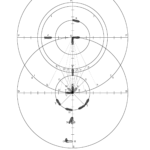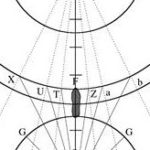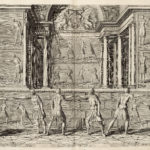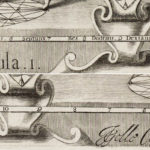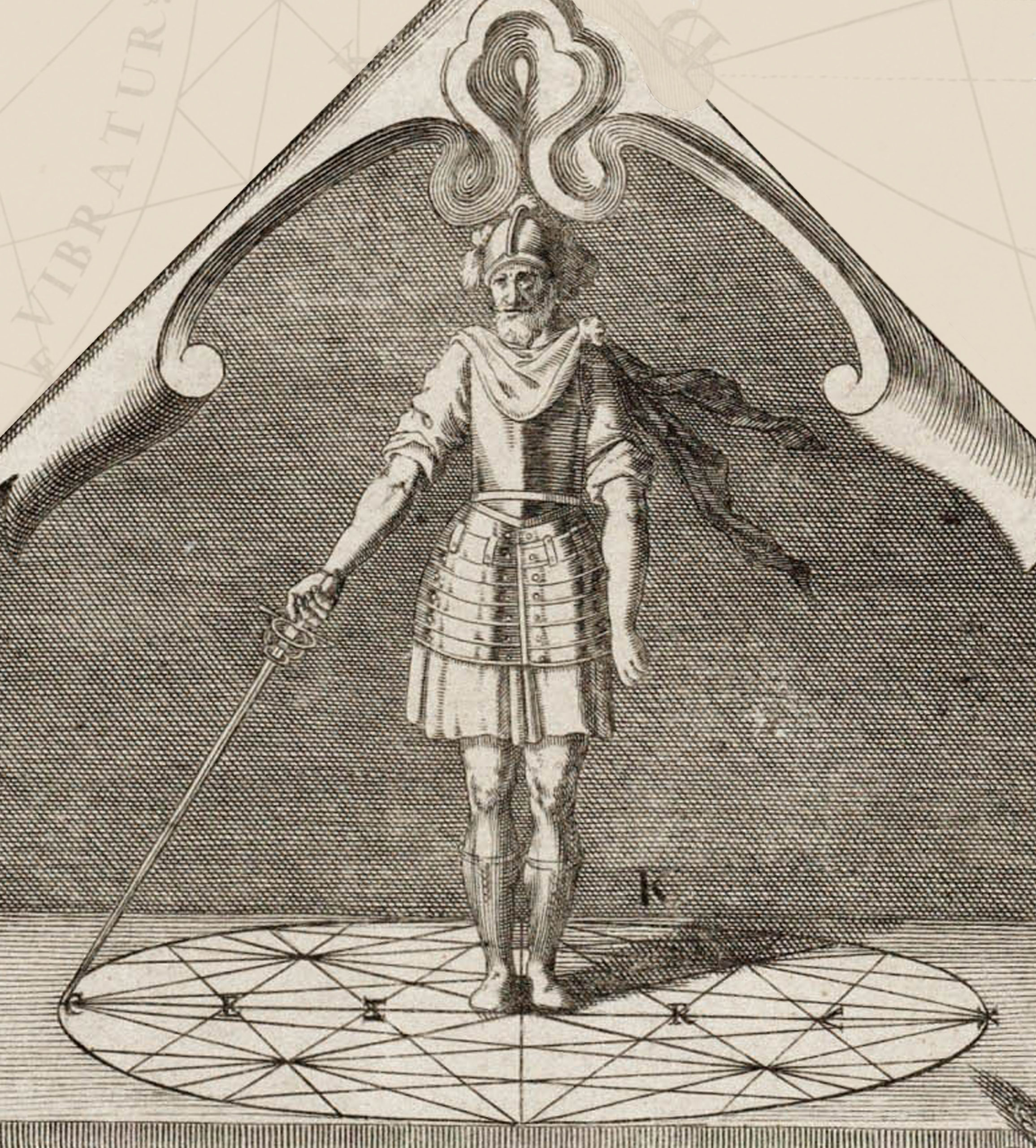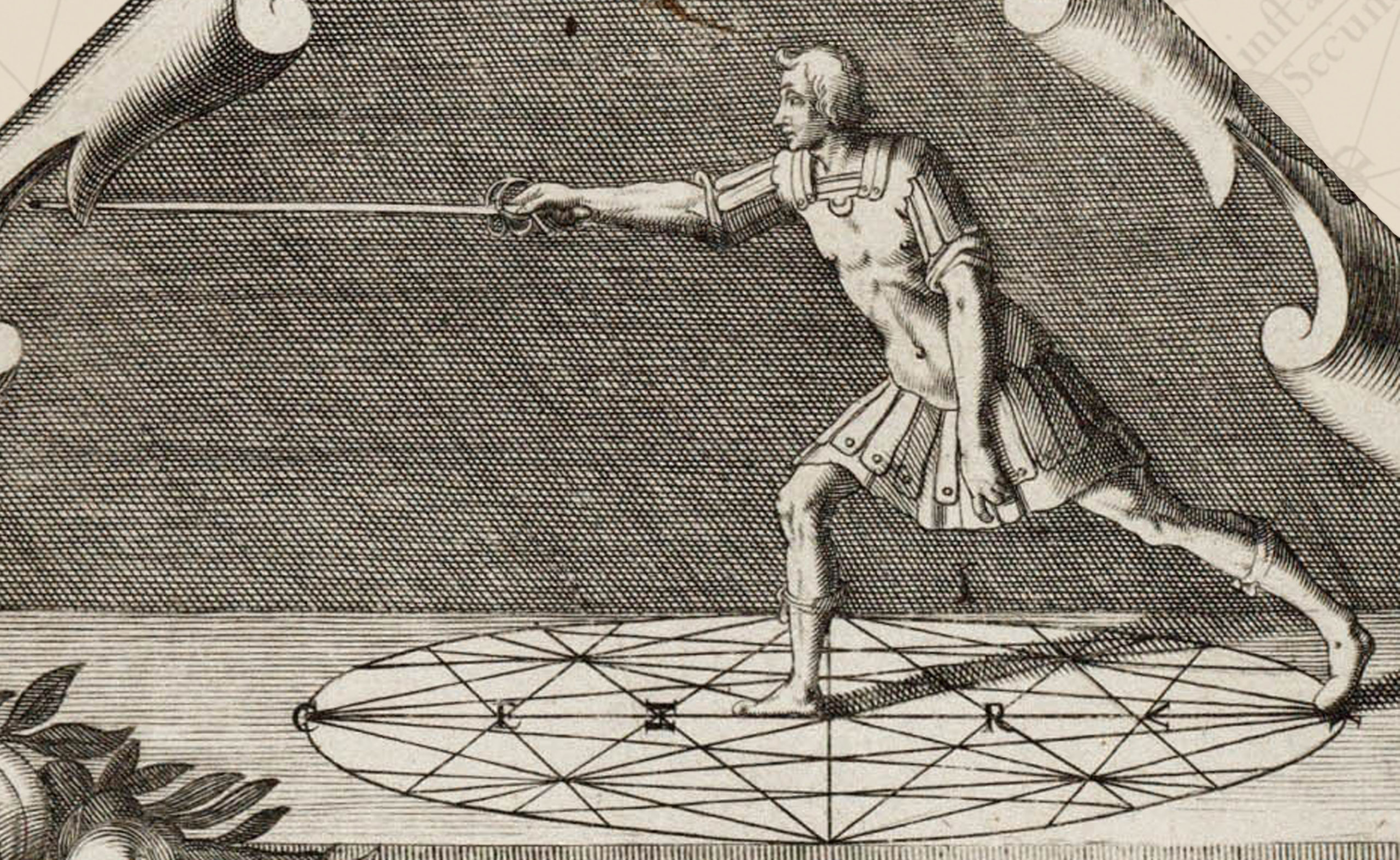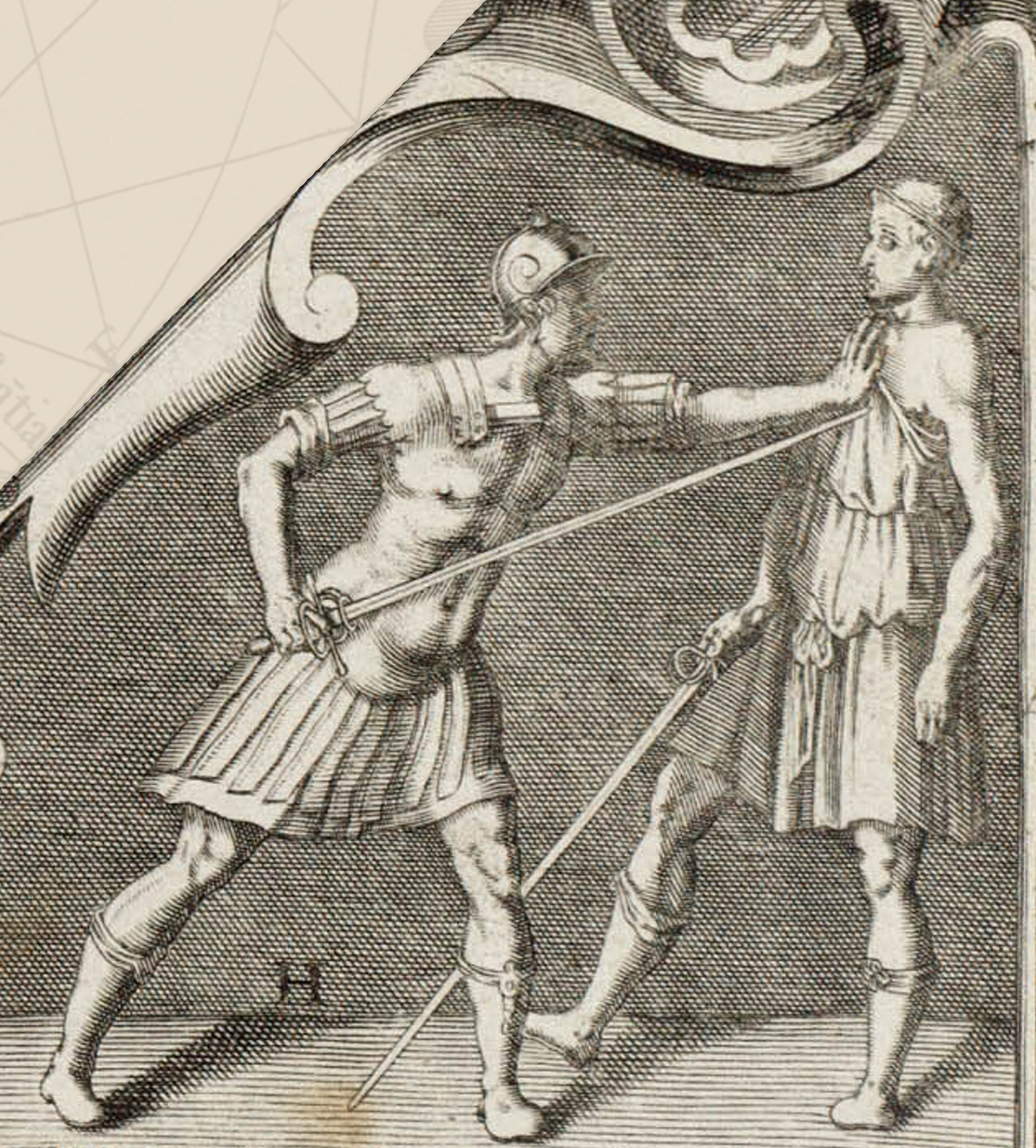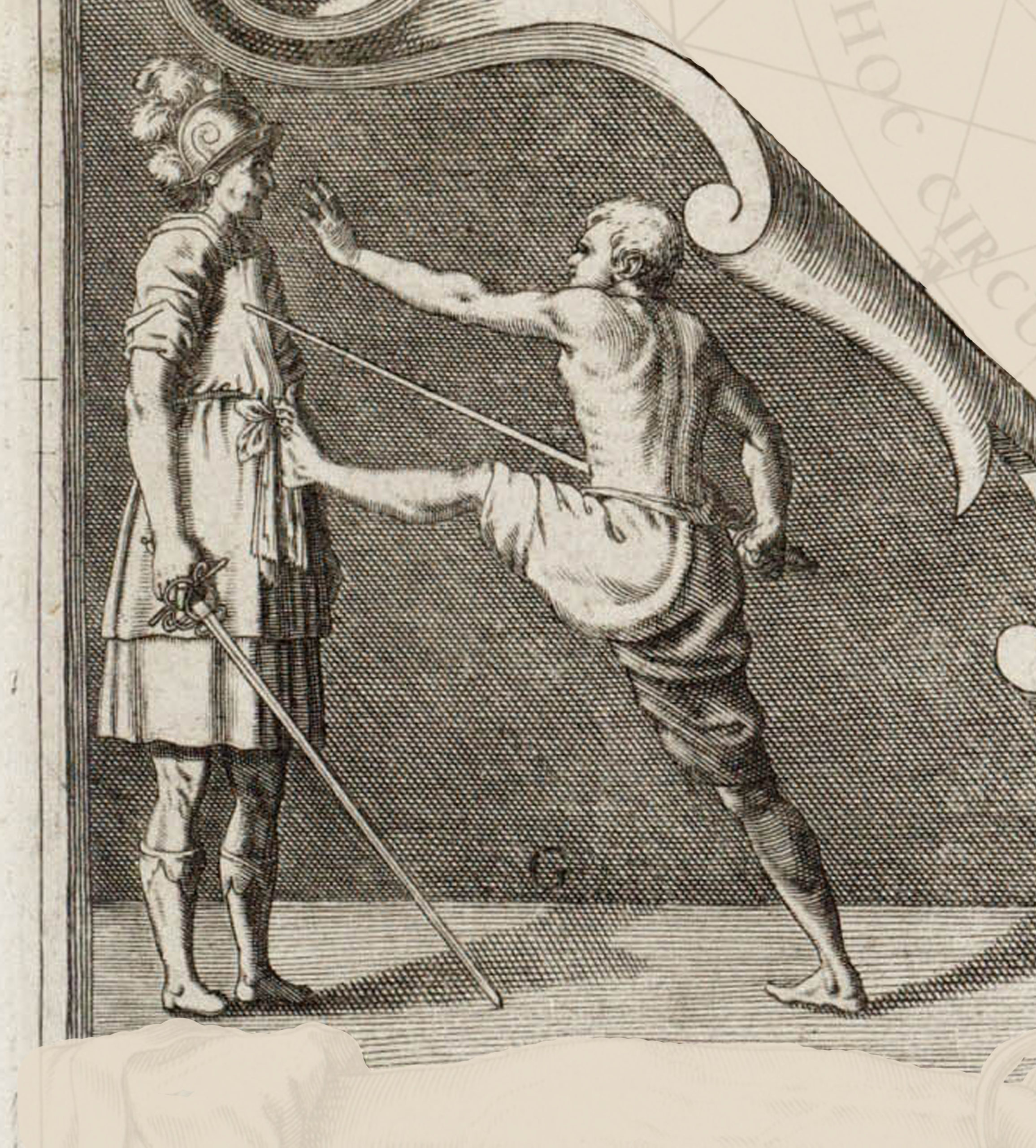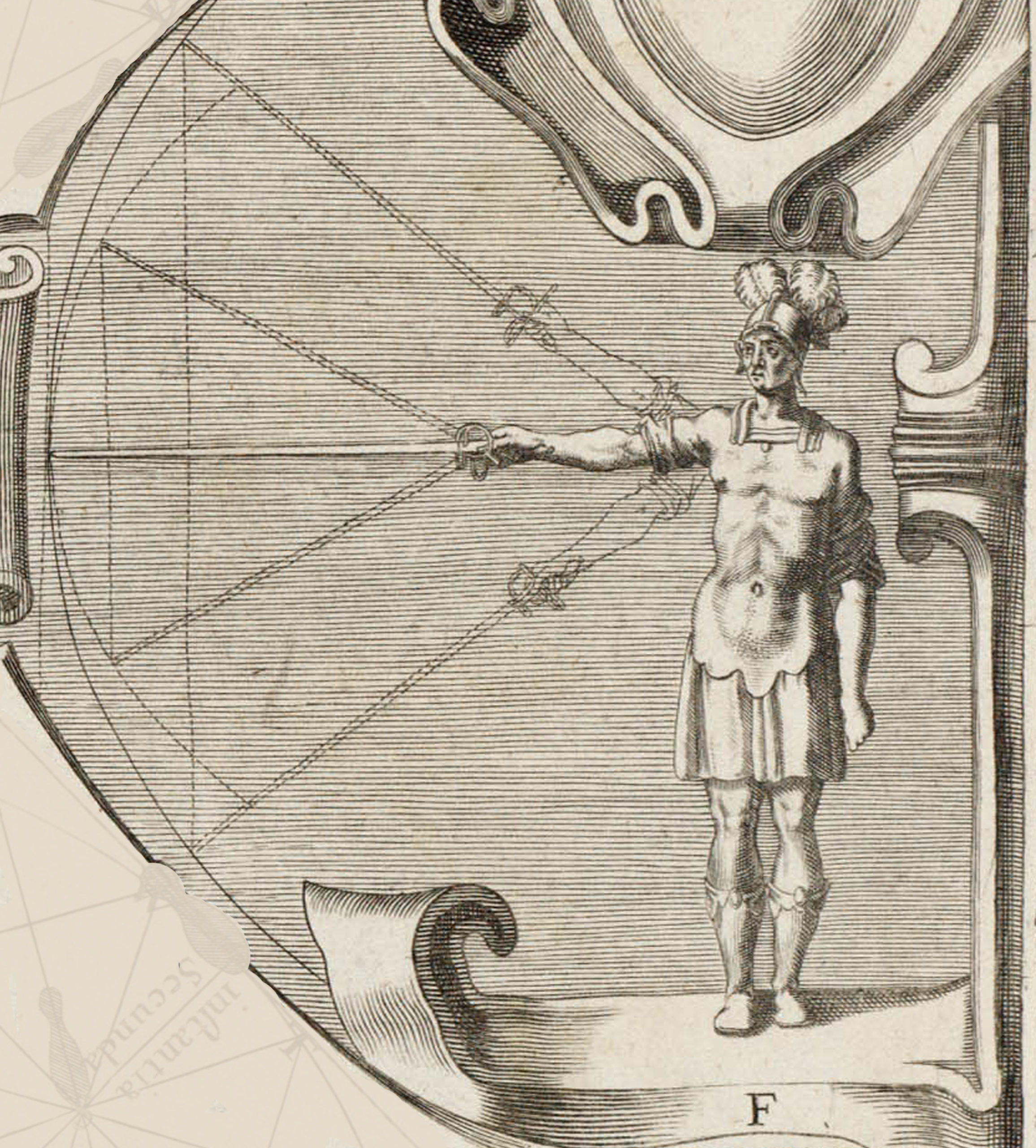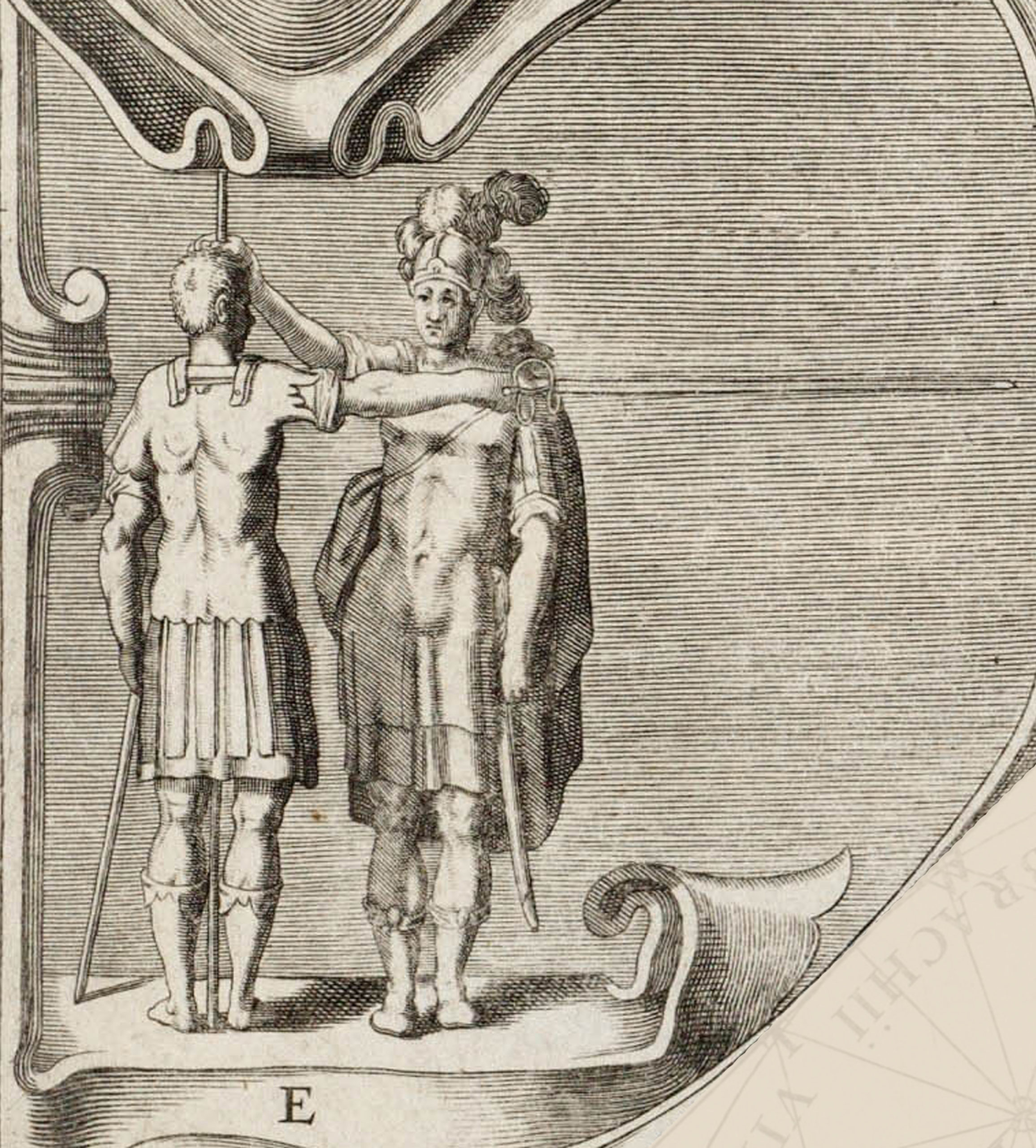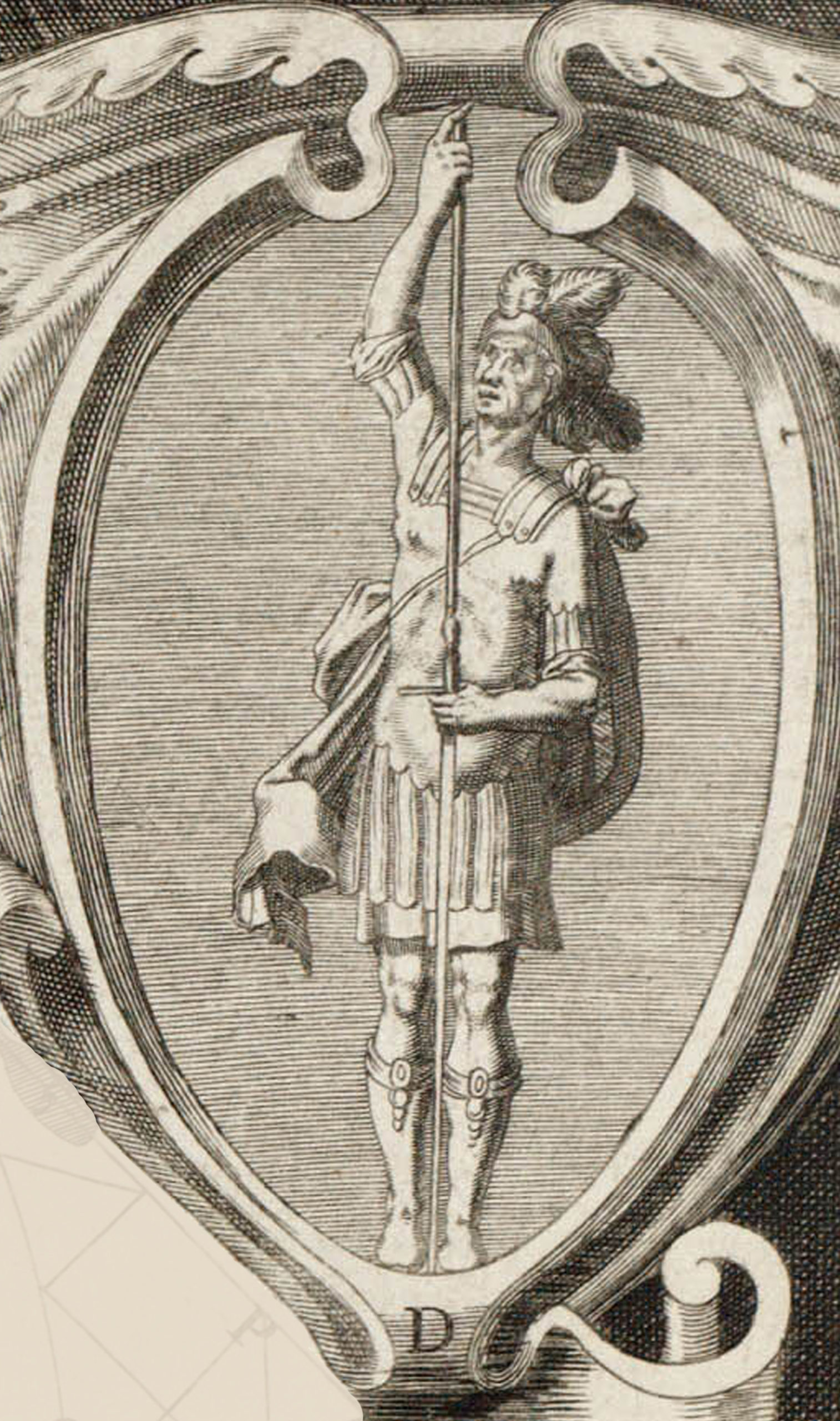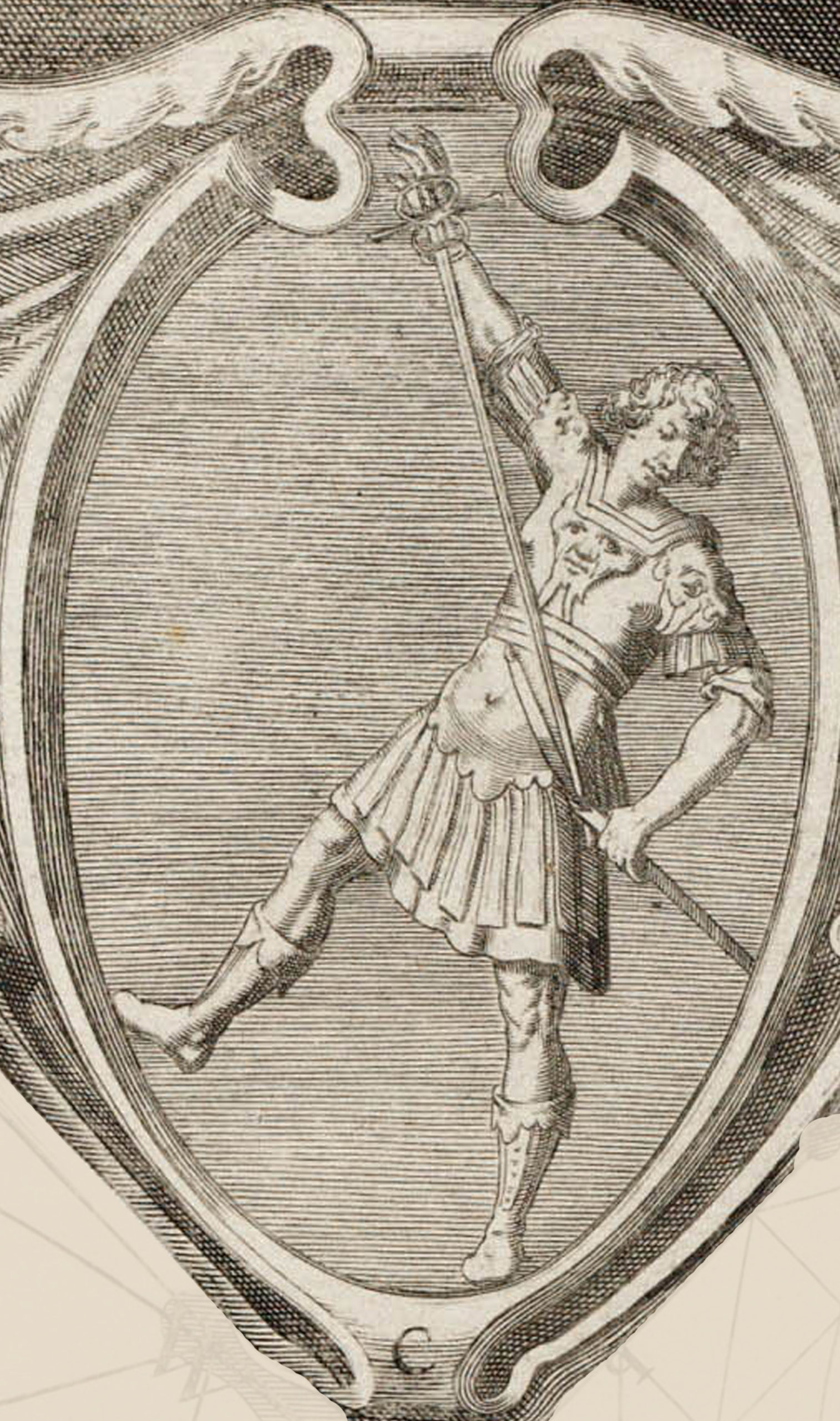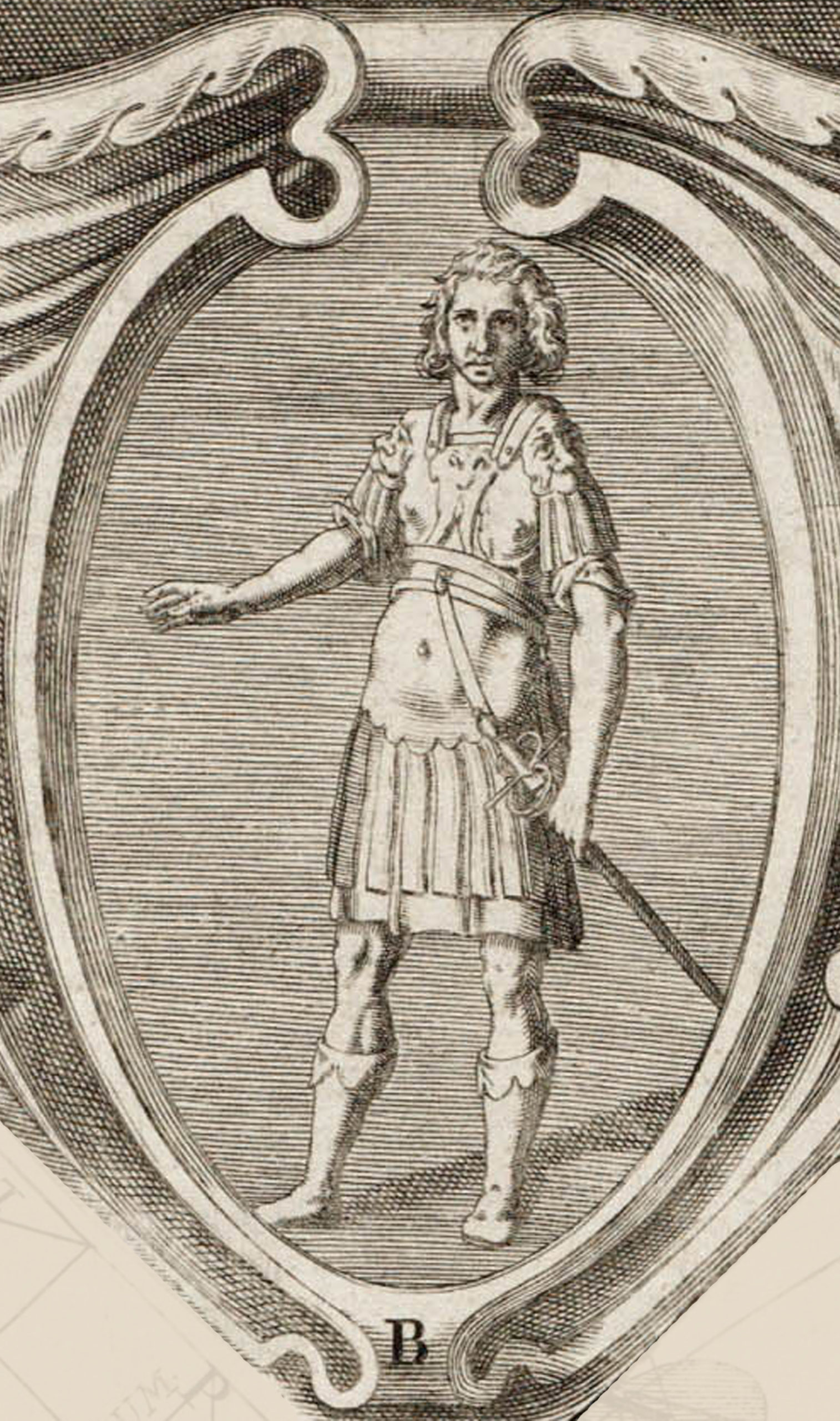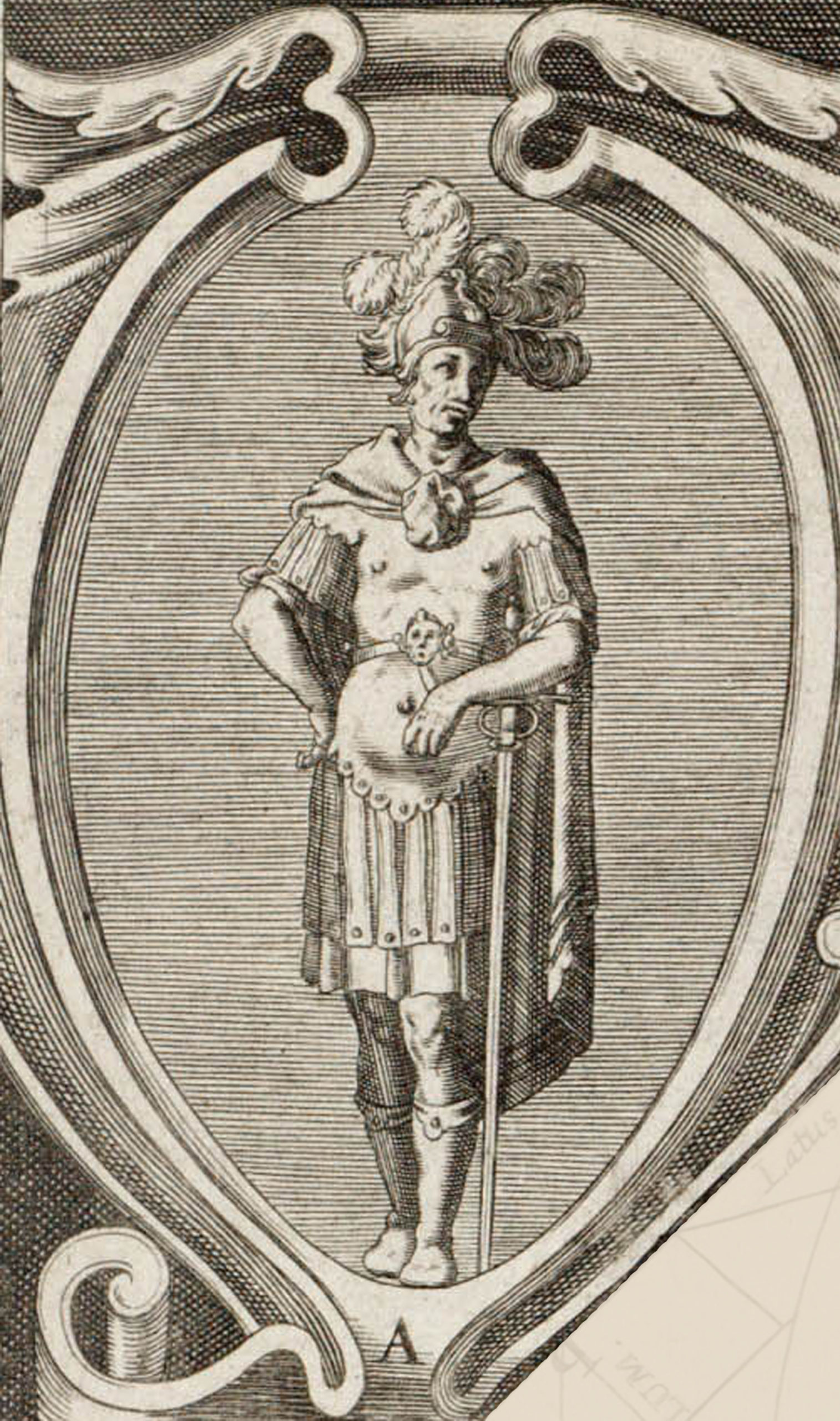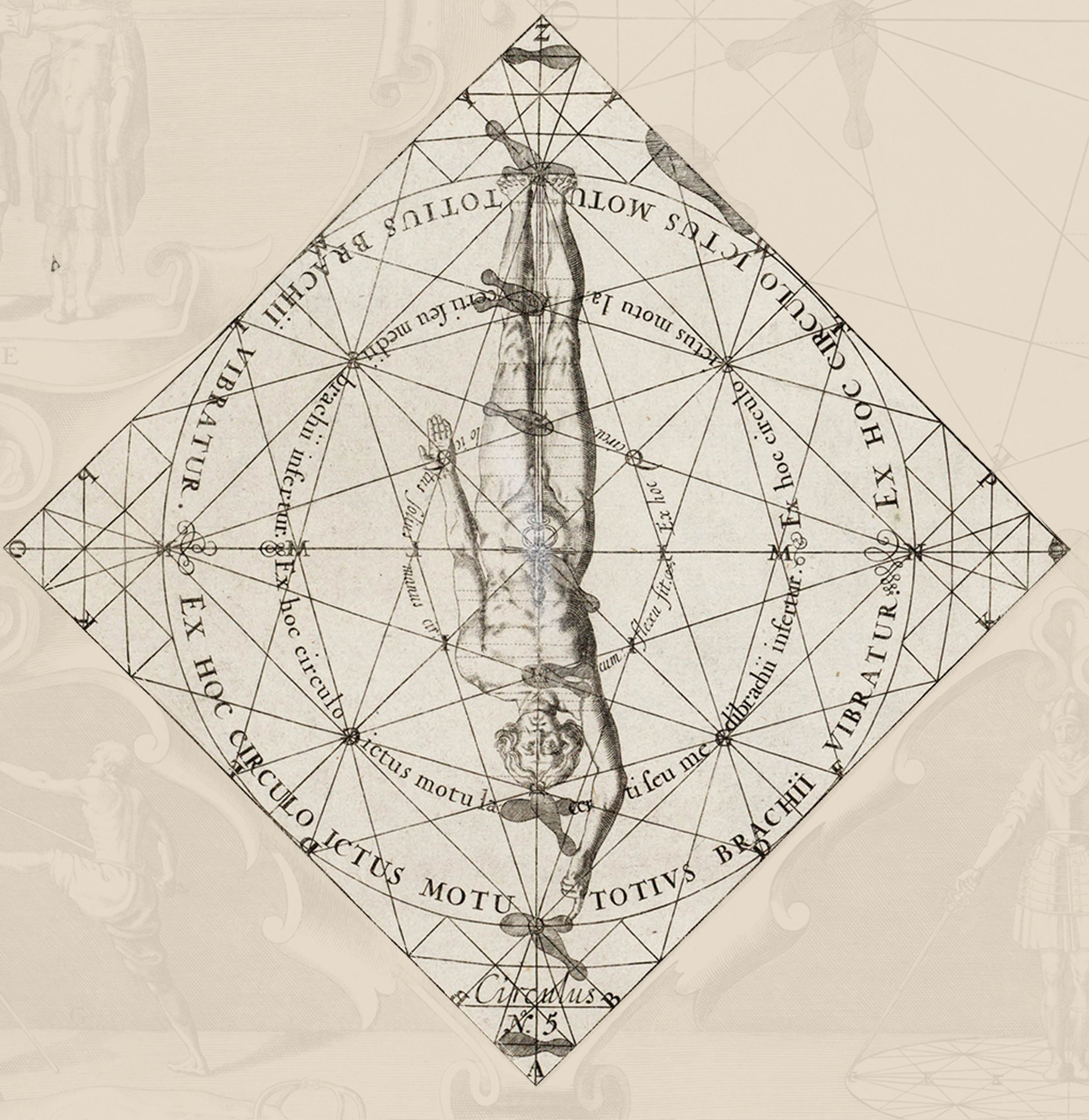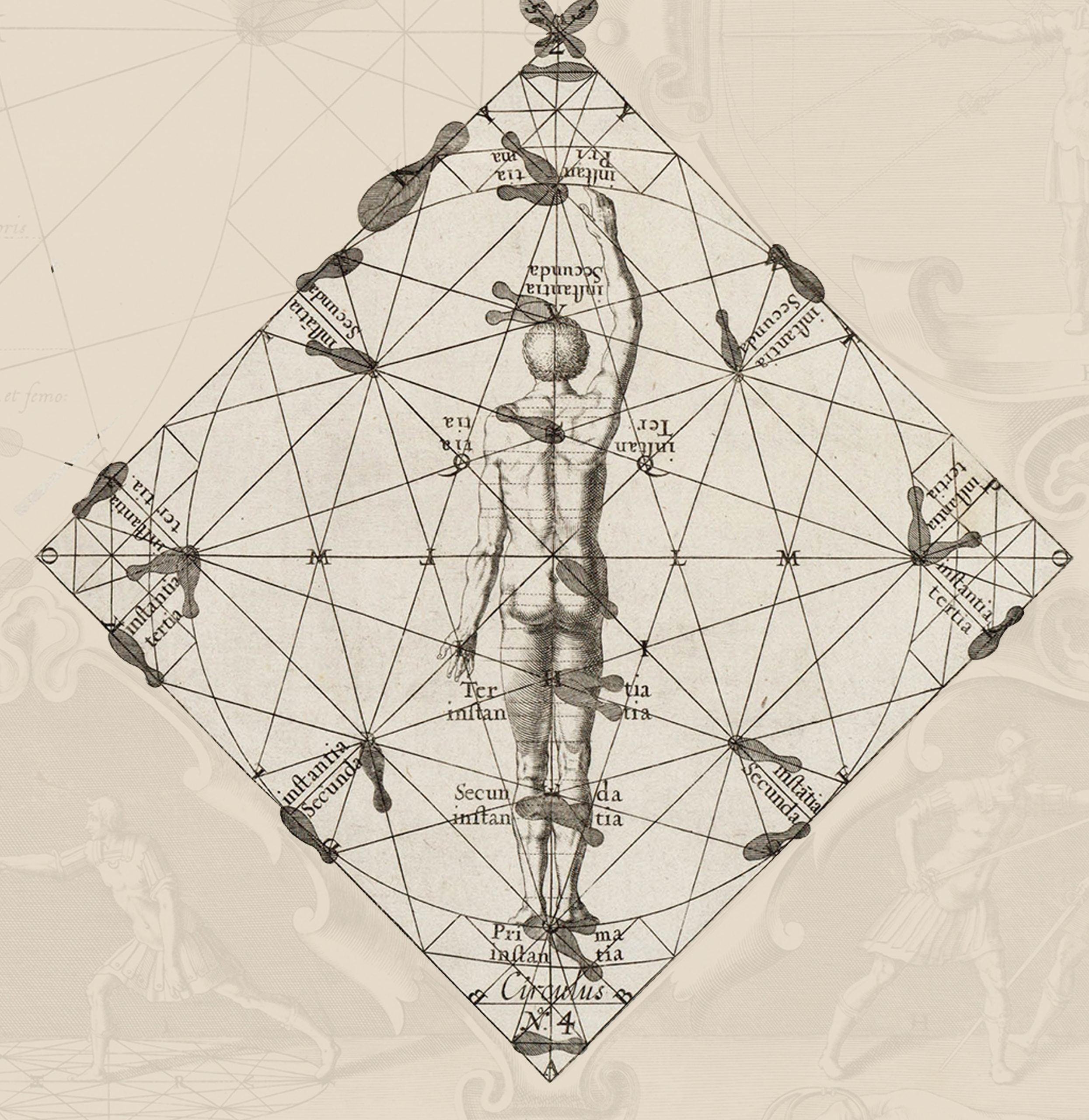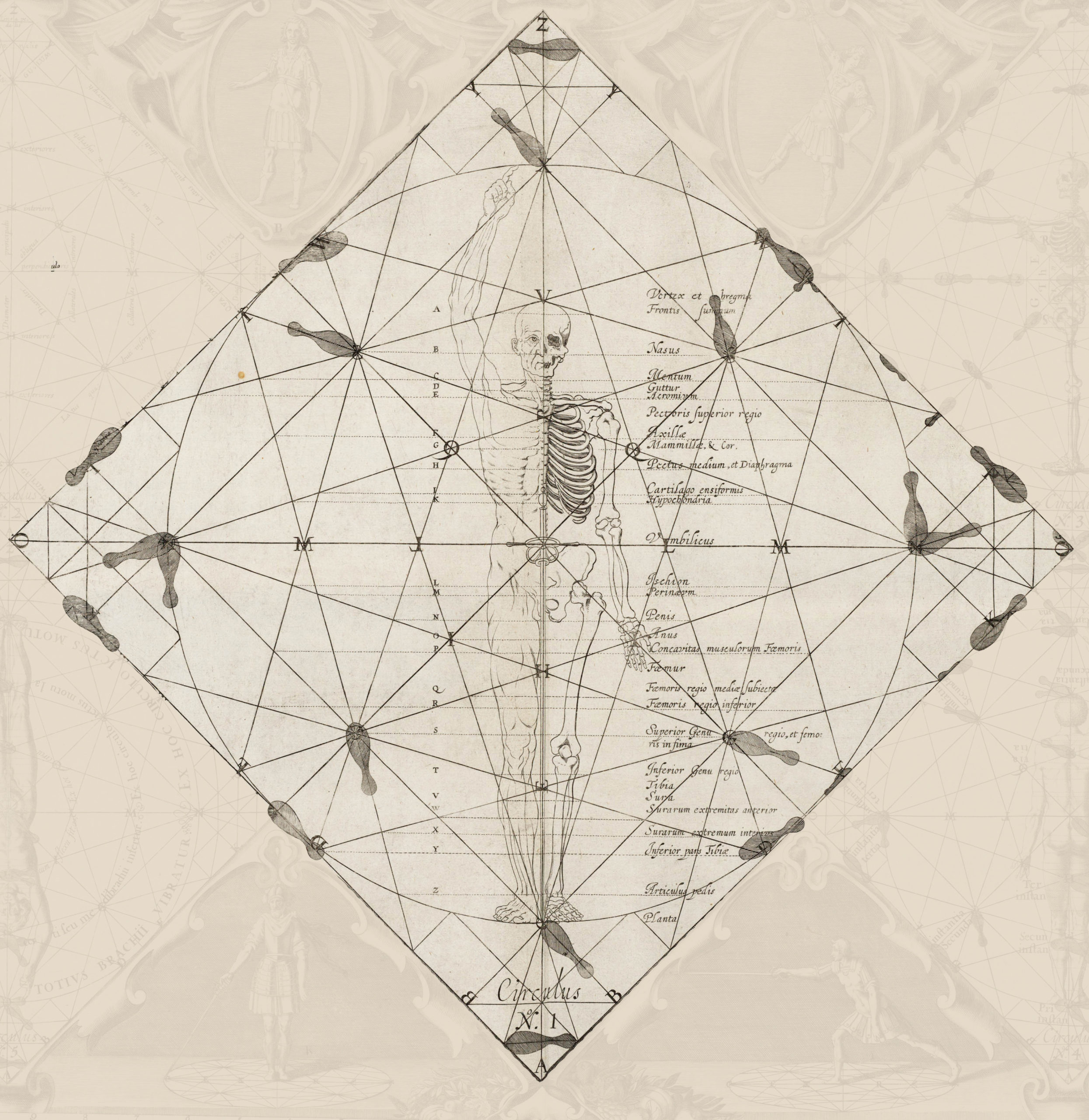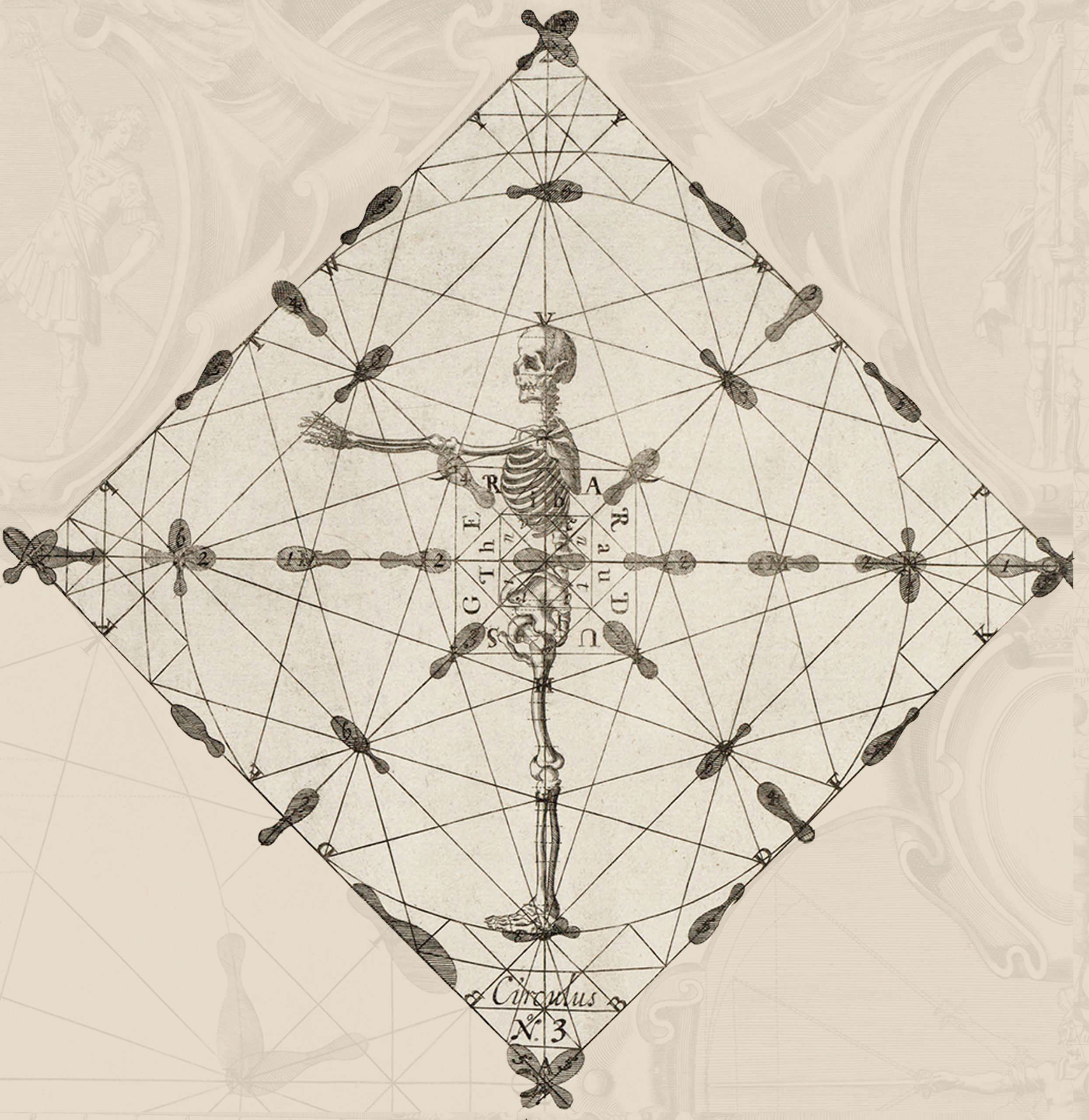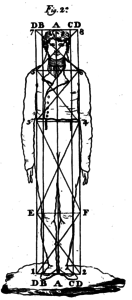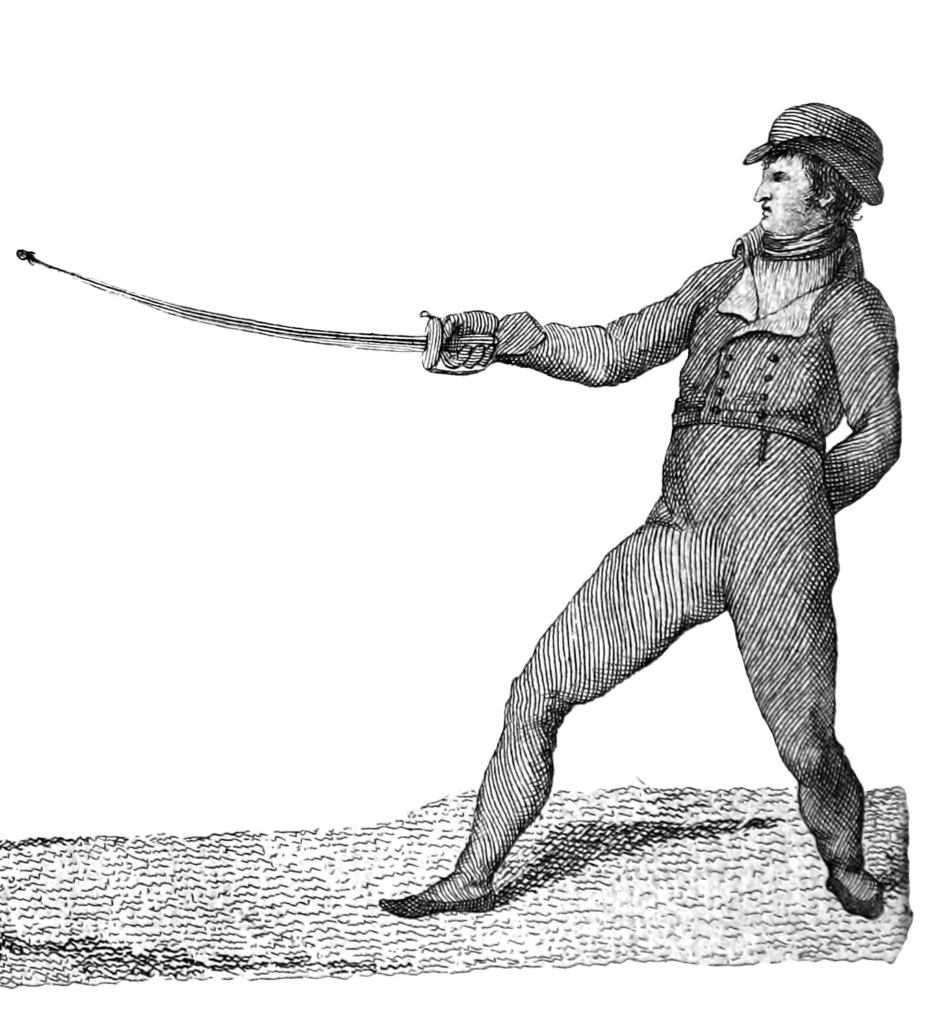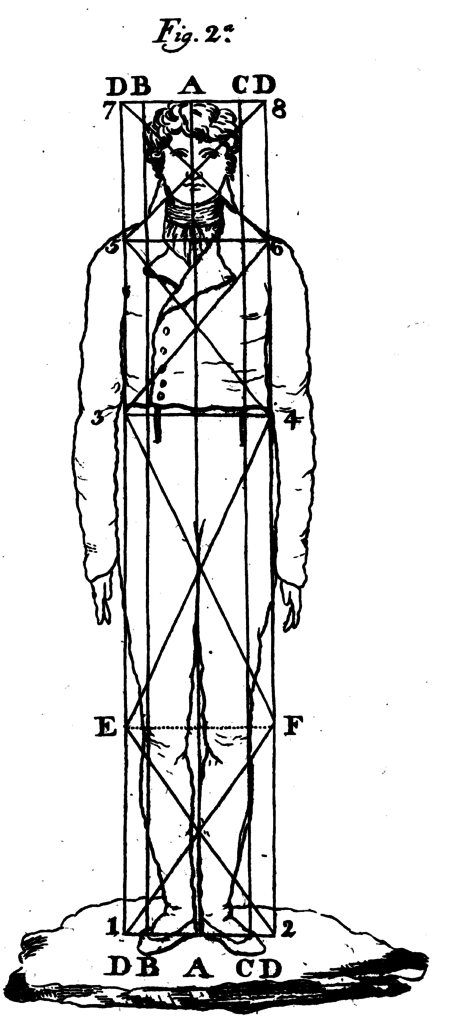
8. Since these cannot be relative measures without giving certain ones to which the others refer, I have judged it necessary to give the man a certain one, and took six feet as the natural, average height, which will be born in mind during the course of this work, it being understood as well that corpulence can also, and even must, change the length of the weapon. This supposed, I will turn to treat of the division of the body into its planes.
Six feet converts to just under 5′ 6″, or 167cm.
9. Figure 2 shows a body viewed from the front and divided by five perpendicular lines, called vertical planes. These are called planes not lines. They are considered to divide the body from one side to the other and not painted onto the surface.
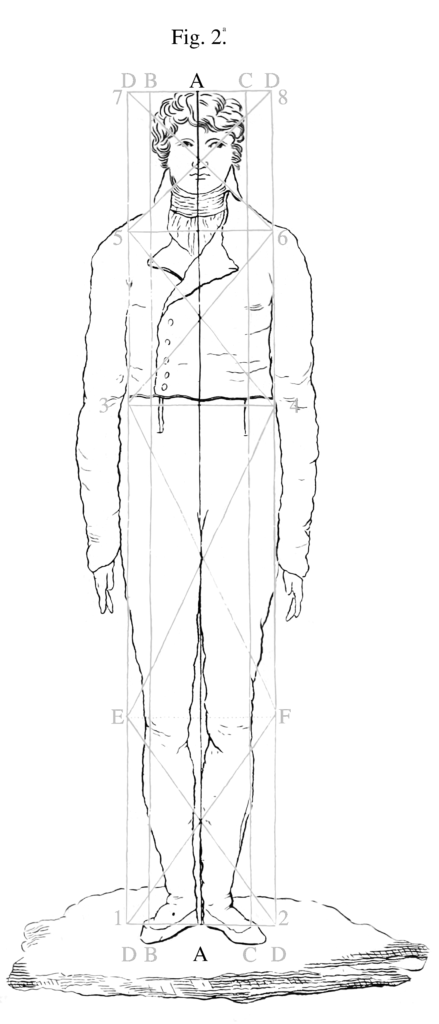
10. The line A-A represents the vertical of the chest which divides the body from the crown of the head to the junction of the legs, splitting into two halves the face, chest, belly, and spine.
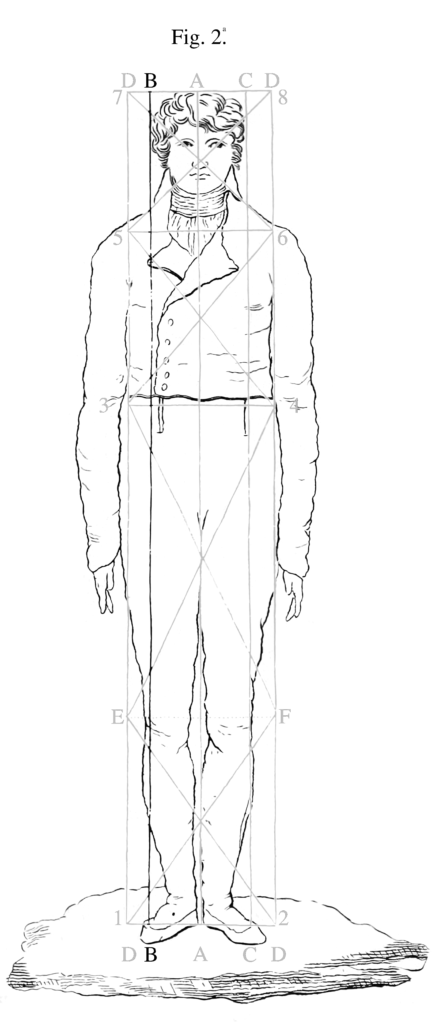
11. B-B, which passes by the right nipple as above, dividing the body into two parts is called the right collateral.
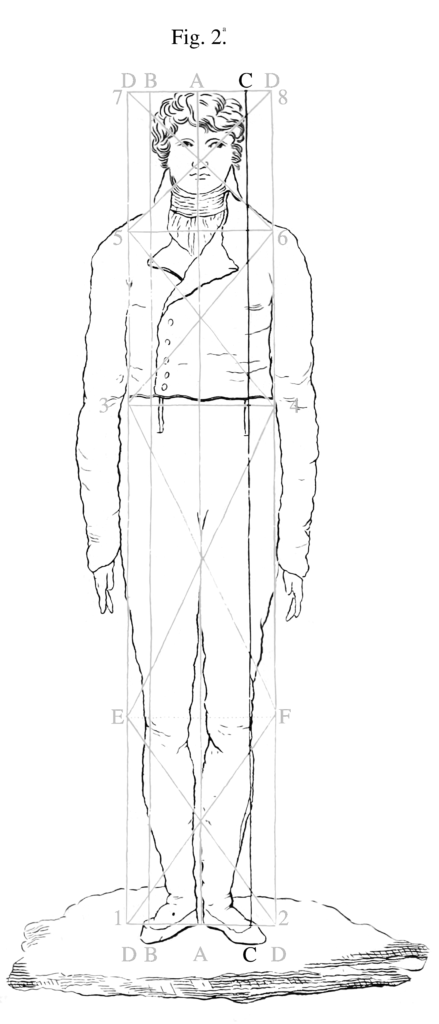
12. C-C, which divides the body on the left side, passing like its partner through the corresponding nipple and making the two parts is called the left collateral.
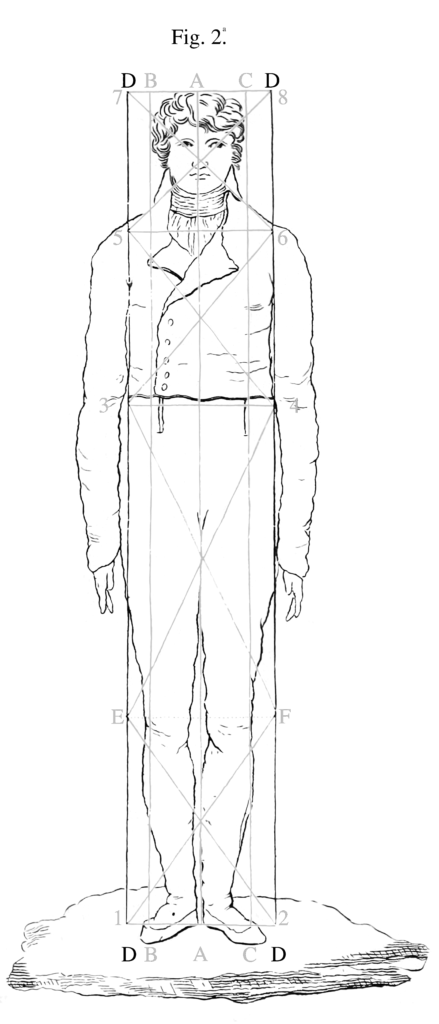
13. The lines D-D and D-D, denoting the left and right verticals are considered twice, effecting both sides, but it is a plane which descends through the crown, cutting by the ears, shoulders, thighs, and ankles, each taking the name of its side.
14. The planes described serve primarily to oppose the enemy with advantage. These are subdivided into planes of greater strength and planes of longer range. The center of all is the chest. From there, those to the left are called stronger, and those to the right are for longer range. For example, if a competitor presents opposition adjoining the left vertical, his weapon will have less reach, even if he extends his right arm in any other opposition, but, since the strength of the arm depends on the body, it will be that much greater when both are used together. And here, where the whole arm as it is united to the body, is precisely where his power is more manifest.
15. If, on the contrary, it is presented in front of the right vertical, it will give your weapon and arm all the measure of which it is capable, but as the arm, in this position, has the greatest possible disunion from the trunk, its force is also more limited.
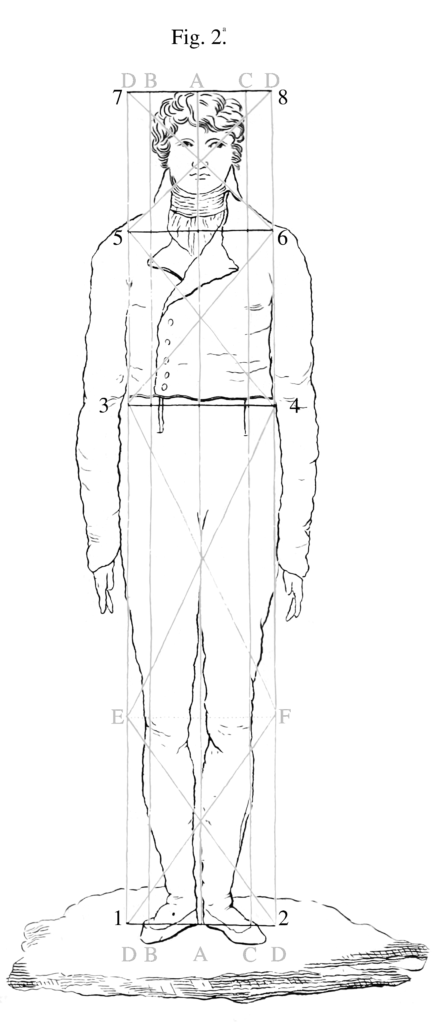
16. In order to explain the vertical planes, we must treat on the horizontals. There are four are considered, two in the body, and two out of it. They are known by the names Inferior, Middle, Superior, and Supreme. The first, or Inferior, is the ground which the combatant is affirmed, numbers 1 and 2. The second, or middle, passes through the waistline, numbers 3 and 4. The third, or Superior, numbers 5 and 6, passes through the tops of the shoulders. The fourth, or Supreme, numbers 7 and 8, passes through the crown of the head.
17. The lower, numbers 1 and 2, serves for the compasses, motions, advances, and retreats. The Middle, 3 and 4, is intended to determine the place occupied by the guard in the upper defense, or the high point. The Superior, 5 and 6, is where the guard is raised in the execution of nearly every attack, and the Supreme, 7 and 8, designates the height of the hand in the lower defenses, or the low point.
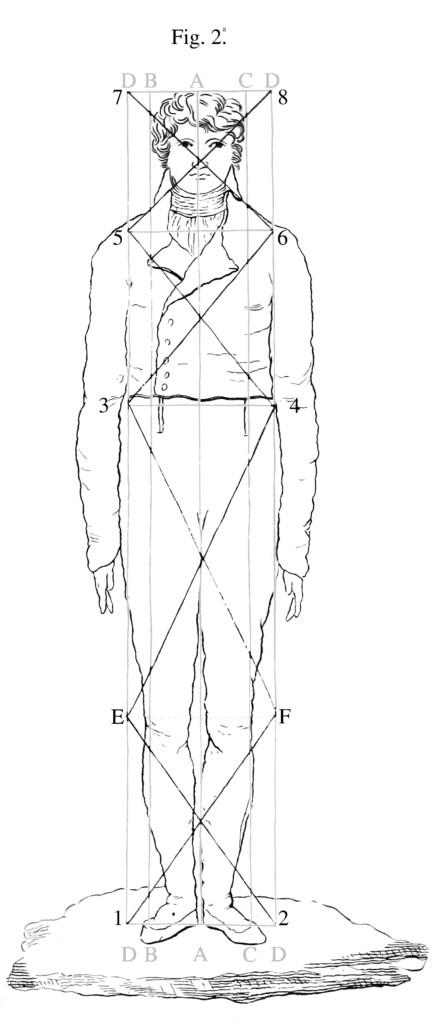
18. The last planes of this division are the diagonals, which cut the body into eight different parts, some taking their start from the right side, and others on the left. The first commences at 7 and terminates at the shoulder, 6. The second commences at 8 and terminates in the shoulder, 5. These are called the Face. The third commences in the shoulder, 5, and terminates at the haunch, 4. The fourth is born in 6 and runs through the haunch, 3. These are called Flanks. The fifth starts in 3 and concludes in the knee, F. The sixth from the number 4 to the E and they are each known as the thighs. The last two cut the legs commencing and E and F, and terminating at 1 and 2. The use of the planes, explained in this paragraph, is to describe the lines that form the diagonal cuts and reverses.

